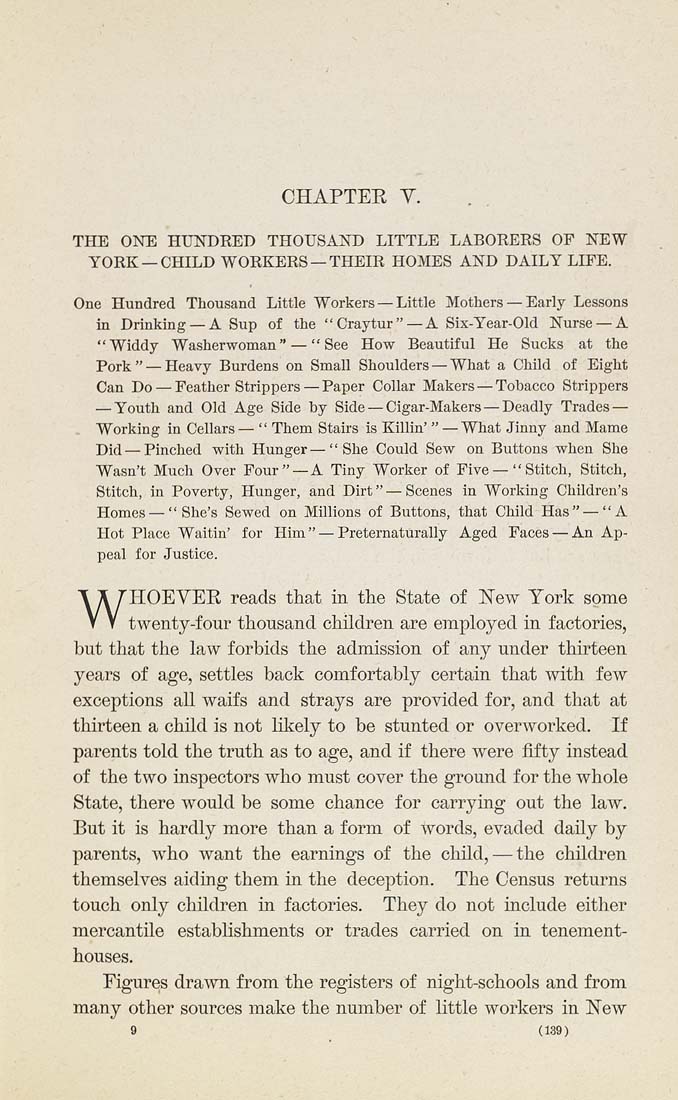CHAPTEE Y. . .
THE ONE HOTTDBEn THOUSAND LITTLE LABORERS OP NEW
YORK —CHILD WORKERS —THEIR HOMES AND DAILY LIFE.
One Hundred Thousand Little Workers — Little Mothers — Early Lessons
in Drinking — A Sup of the "Craytur"—A Six-Year-Old Nurse — A
"Widdy Washerwoman" — "See How Beautiful He Sucks at the
Pork" — Heavy Burdens on Small Shoulders — What a Child of Eight
Can Do — Feather Strippers—Paper Collar Makers — Tohacco Strippers
— Youth and Old Age Side by Side — Cigar-Makers — Deadly Trades —
. Working in Cellars — " Them Stairs is Killin' " —What Jinny and Mame
Did — Pinched with Hunger—"She Could Sew on Buttons when She
Wasn't Much Over Pour" —A Tiny Worker of Five—"Stitch, Stitch,
Stitch, in Poverty, Hunger, and Dirt" — Scenes in Working Children's
Homes — "She's Sewed on Millions of Buttons, that Child Has" — "A
Hot Place Waitin' for Him" — Preternaturally Aged Faces — An Ap¬
peal for Justice.
WHOEVEK reads that in the State of New York some
twenty-four thousand chfldren are employed in factories,
but that the law forbids the admission of any under thirteen
years of age, settles back comfortably certain that with few
exceptions all waifs and strays are provided for, and that at
thirteen a child is not likely to be stunted or overworked. If
parents told the truth as to age, and if there were fifty instead
of the two inspectors who must cover the ground for the whole
State, there would be some chance for carrying out the law.
But it is hardly more than a form of words, evaded daily by
parents, who want the earnings of the child, — the children
themselves aiding them in the deception. The Census returns
touch only children in factories. They do not include either
mercantile establishments or trades carried on in tenement-
houses.
Figures drawn from the registers of night-schools and from
many other sources make the number of little workers in New
9 (139)
|








